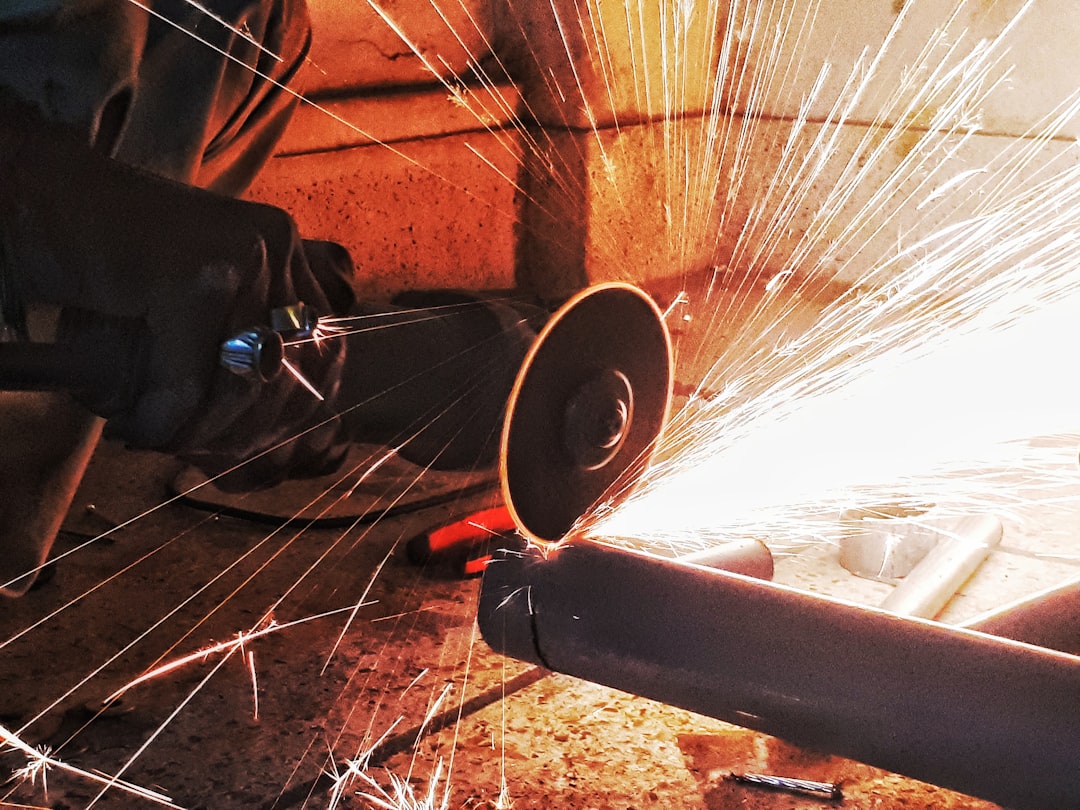In today’s rapidly evolving world, disruption is the name of the game. With advancements in technology, the economy has become more dynamic than ever, forcing companies to navigate a constantly shifting landscape.
These changes are driven by startups that are leveraging emerging technologies to transform entire industries. Their willingness to experiment and adapt quickly has led to some of the most significant changes in our economy that we have seen in decades.
As we witness the rise of these disruptive startups, it’s clear that the old ways of doing business are no longer sufficient. Companies must embrace change, innovate, and adapt to stay relevant in this new age of disruption.
In this blog post, we’ll explore some of the most impactful examples of disruption, from the transportation industry to the food industry. We’ll examine how these startups are shaking up their respective industries, and what it means for consumers and companies alike.
By exploring these case studies, we hope to shed light on the power of disruptive innovation and inspire others to embrace change in their own businesses. So let’s dive in and explore the world of disruption!
The End of Taxi-Hailing Monopolies: How Uber and Lyft are Changing the Game
The taxi industry has been around for well over a century, but it wasn’t until recently that its long-standing status quo was challenged. Uber and Lyft burst onto the scene several years ago, introducing a new wave of disruption that shook up the industry and drew attention from consumers and investors alike.
Before the rise of ride-hailing services, taxi-hailing monopolies dominated the market, with limited competition resulting in high prices and poor service. Consumers were at the mercy of taxi companies, with few options to choose from and a lack of transparency in pricing.
But that all changed with the introduction of Uber in 2010, which offered a new way to hail a ride using a simple mobile app. Lyft soon followed, and the two companies quickly gained traction in major cities across the world.
The key advantage of these ride-hailing services was their ability to offer more affordable and convenient transportation options for consumers. By connecting riders directly with drivers, they eliminated the middleman and allowed for more efficient use of resources. This led to lower prices and higher accessibility, particularly in areas with limited public transportation.
But it wasn’t just riders who benefited from the rise of Uber and Lyft. Drivers also found new opportunities to earn income on their own terms, with the flexibility to set their own schedules and work as much or as little as they wanted.
The emergence of ride-hailing services also disrupted the traditional taxi industry, forcing companies to adapt or risk becoming obsolete. Many cities have introduced new regulations to accommodate ride-hailing services, while others have tried to block their entry altogether.
Despite early resistance, Uber and Lyft have continued to grow and expand into new markets, with new features and offerings such as carpooling and food delivery services. They have even begun to experiment with autonomous vehicle technology, signaling a potential shift in the transportation industry as a whole.
In conclusion, the rise of Uber and Lyft has been a game-changer in the transportation industry, disrupting long-standing taxi-hailing monopolies and offering consumers more affordable and convenient transportation options. Whether you are a rider, driver or investor, the impact of ride-hailing services on the industry cannot be ignored. As we move towards an increasingly digital future, it will be interesting to see how other industries adapt and evolve in response to disruptive new players.
The emergence of ride-hailing services also disrupted the traditional taxi industry, forcing companies to adapt or risk becoming obsolete.
Changing the Way We Shop: The Disruptive Power of E-commerce Startups
E-commerce has revolutionized the way we shop, offering unparalleled convenience, vast selection, and competitive pricing to consumers. From Amazon to Alibaba, E-commerce giants have dominated the market for years, but start-ups are slowly but surely shaking up the status quo.
These disruptors are offering specialized products, personalized services, and unique experiences that set them apart from their larger competitors. Take Casper, for example, a start-up that offers innovative mattresses and sleep products. Rather than competing with larger E-commerce retailers, Casper has carved out a niche for itself by creating a highly specialized product and delivering exceptional customer service.
Similarly, Warby Parker disrupted the eyewear market by offering in-home try-ons, free shipping, and affordable, stylish glasses. By focusing on the customer and delivering an experience that traditional retailers cannot replicate, Warby Parker has become a rising star in the industry.
E-commerce start-ups are also leading the way in sustainable and ethical practices. Companies like Allbirds and Everlane have built their brands on transparency, responsible sourcing, and ethical production methods. These practices not only appeal to environmentally conscious consumers but also set them apart from larger retailers that are often criticized for questionable ethical standards.
In short, E-commerce start-ups are changing the way we shop by offering unique products, personalized experiences, and sustainable practices. While large players like Amazon will likely remain dominant, the impact of these disruptors cannot be underestimated. The future of E-commerce is undoubtedly bright, and start-ups are leading the way.
By focusing on the customer and delivering an experience that traditional retailers cannot replicate, Warby Parker has become a rising star in the industry.
Bringing Healthcare into the Digital Era: How Healthtech is Leading the Charge
The healthcare industry is notorious for being slow to adapt and adopt new technologies. However, this is no longer the case as healthtech is leading the charge towards bringing healthcare into the digital era. From telemedicine to wearable devices, healthcare is becoming more accessible and convenient than ever before.
One of the most significant contributions of healthtech is the concept of telemedicine. Telemedicine is the use of technology to provide medical care through virtual consultations and remote monitoring. With the widespread adoption of telemedicine, patients no longer have to make unnecessary trips to the doctor’s office, resulting in time and money savings.
Moreover, wearable devices such as Fitbit and Apple Watch are also playing a significant role in the healthtech industry. These devices allow users to track their fitness levels, monitor their heart rates, and even detect irregular heartbeats. The data collected by these devices can be synced to mobile applications, giving patients real-time insights into their health.
Another area of healthtech that is gaining traction is the use of artificial intelligence (AI) in healthcare. AI-powered chatbots, for example, can help patients with basic medical information and route them to the appropriate resources. Additionally, AI algorithms can analyze medical data and identify patterns, leading to faster and more accurate diagnosis.
Finally, healthtech has led to the development of personalized medicine. With advancements in genetics and the ability to analyze large sets of medical data, doctors can now provide tailored treatment plans that are optimized for individual patients. This means more efficient treatments, faster recovery times, and happier patients.
In conclusion, healthtech is bringing healthcare into the digital era, making healthcare more accessible and convenient for patients. From telemedicine to wearable devices, healthtech is changing the landscape of healthcare. As healthtech continues to advance, we can expect better outcomes for patients and a healthier population as a whole.
Moreover, wearable devices such as Fitbit and Apple Watch are also playing a significant role in the healthtech industry.
Beyond Meat: Redefining the Food Industry with Plant-Based Proteins
The food industry has been rapidly evolving over the past few years, with a growing trend towards plant-based diets and alternative protein sources. Beyond Meat, a Los Angeles-based food company, has been leading the charge in this movement with their innovative plant-based meat alternatives.
Founded in 2009, Beyond Meat has been on a mission to create delicious, nutritious, and sustainable meat alternatives that taste and look just like real meat. Their products are made from a blend of plant-based ingredients, including pea protein, rice protein, and mung bean protein, which mimic the texture, taste, and nutritional value of real meat.
One of the main reasons Beyond Meat has been so successful is because they have managed to create products that appeal not only to vegetarians and vegans but also to meat-eaters who are looking for healthier and environmentally friendly alternatives. Their products have been so well-received that they are now available in over 58,000 retail locations, restaurants, and foodservice outlets in 50 countries.
Beyond Meat’s success lies not only in their innovative approach to alternative meat but also in their commitment to sustainability. The company claims that their products use 99% less water, 93% less land, and 90% fewer greenhouse gas emissions than traditional meat products. This commitment to eco-friendliness has not gone unnoticed, as Beyond Meat was named one of the World’s Most Innovative Companies by Fast Company in 2020.
In addition to creating plant-based meat alternatives, Beyond Meat has also been working on developing plant-based versions of other animal-based products, such as dairy and eggs. Their latest product, Beyond Sausage, is one such example, which looks, cooks, and tastes like traditional pork sausage but is made entirely from plant-based ingredients.
Beyond Meat’s success has not gone unnoticed, with traditional meat companies such as Tyson Foods, Nestle, and Smithfield Foods investing in plant-based meat alternatives of their own. This growing competition in the industry is a testament to Beyond Meat’s influence in redefining the food industry and providing consumers with healthier and environmentally friendly alternatives.
In conclusion, Beyond Meat’s innovative approach to alternative meat has been a game-changer in the food industry. Their plant-based meat alternatives have not only been well-received by vegetarians and vegans but also by meat-eaters who are looking for healthier and environmentally friendly options. Their commitment to sustainability and eco-friendliness has also been a driving force in their success. Beyond Meat has shown us that the future of food is not only plant-based but also delicious, nutritious, and sustainable.
In conclusion, Beyond Meat’s innovative approach to alternative meat has been a game-changer in the food industry.
Sustainability in Fashion: How Sustainable Startups are Making Waves in the Industry
The fashion industry has been long notorious for its environmentally harmful practices and labor exploitation. However, a new breed of fashion startups is challenging this status quo by placing sustainability at the core of their business models. These companies are using innovative materials and production methods to create clothing that is not only environmentally friendly but also socially responsible.
One of the most significant challenges that sustainable fashion startups face is the perception that environmentally friendly clothing is expensive and lacks style. However, companies like Reformation and Everlane are proving that this doesn’t have to be the case. They’re using smart design principles, such as creating versatile pieces that can be worn in multiple ways, to make their clothes both stylish and sustainable. These startups are disrupting the traditional fashion industry by showing that you can be trendy and eco-conscious at the same time.
Another way in which sustainable fashion startups are disrupting the industry is by using innovative materials. For example, Bolt Threads is creating silk-like fabrics from spider silk that are biodegradable and don’t require harmful pesticides. Similarly, Pangaia is using seaweed fibers to create eco-friendly clothing that is both soft and durable.
In addition to creating sustainable products, many of these startups are also committed to creating a more ethical supply chain. For example, the brand Allbirds is committed to using only ethically sourced wool and has also developed its material made from plant-based fibers. By ensuring that their manufacturing process is transparent and that their workers are fairly compensated, these companies are practicing what they preach and creating a more socially responsible fashion industry.
Overall, sustainable fashion startups are proving that you can be fashionable without harming the planet or exploiting workers. By using innovative materials and production methods, they’re creating clothing that is not only attractive but also environmentally friendly and socially responsible. It’s exciting to see these companies challenging the traditional fashion industry and offering a sustainable alternative.
Keep reading our next section to understand the conclusion of our disruptive innovation blog post!
By ensuring that their manufacturing process is transparent and that their workers are fairly compensated, these companies are practicing what they preach and creating a more socially responsible fashion industry.
Conclusion: Embracing the Future of Disruption
As we conclude this blog post, it is evident that disruption is the new normal in today’s world. We have seen how several industries have been transformed by technology, innovation and forward-thinking entrepreneurs who identify gaps and take advantage of them. From the way we hail taxis to the clothes we wear and the food we eat, disruption is the order of the day.
Change can be difficult to embrace, especially when it is so rapid, but it is essential. As the renowned scientist Charles Darwin once said, “It is not the strongest of the species that survives, nor the most intelligent, but the one most responsive to change.” As we embrace the future of disruption, it is critical that individuals, businesses, and governments adapt to the changing times.
It is undeniable that disruptive startups, such as Uber and Lyft, have created opportunities for people to earn a living, decentralize industries, and provide competitive alternatives. E-commerce startups have revolutionized the way we shop, while healthtech startups have made healthcare more accessible and convenient. Plant-based protein companies have redefined what we consider conventional food, and sustainable startups have introduced new ways of producing clothing with reduced environmental impact. All these innovations have brought about new job opportunities, greater cost savings and improved convenience.
In conclusion, disruption is not necessarily a negative force; rather, it is a catalyst for growth and innovation. Rather than resisting change, we should embrace the future of disruption. Only by doing so can we achieve progress and stay ahead of the curve. Thank you for reading this blog post, and we hope that it has provided valuable insight into the new age of disruption.





